Ten of my Favorite Classroom Activities
How a surprise dose of empathy for my students inspired me to reinvent my classes
By Charles M. Wood, Ph.D.—Faculty Innovation Fellow, University of Tulsa
Early in my teaching days, I invited a guest speaker to share their work and experiences with my class. After introducing the speaker, I took a seat at the back of the room to listen and take notes. The speaker did almost exactly what I had been doing – bringing up a deck of PowerPoint slides then reading through and elaborating on each bullet point. After 20 minutes, I was pulling my hair out with boredom. I asked myself, “How do the students do this all day?!” and I resolved to improve the way I teach.
Ideation and prototyping
I began looking and brainstorming for experiential in-class exercises that related to my course material. I started collecting an assortment of failed products that I called my “Wall of Shame.” I began a daily practice of scouring the internet for current and thought-provoking news stories about our class topics. And I researched how other great teachers engaged students. After a few years of this, I had a collection of hands-on experiences and exercises that I now build into nearly every class session I teach. Here are 10 of my (and my students’) favorites. I hope there are a few that are new to you:
| Main Lesson | Exercise Name |
| Innovation ideas can come from odd combinations | Two Buckets |
| The best innovations start by considering real human needs and problems | iWish |
| Every student is an innovator, but in unique ways | Innovation U |
| Learn what it feels like not to edit yourself or others during brainstorming sessions | 100 Uses |
| Innovations often arise when technology meets human need | R&D |
| Experience how collaboration improves outcomes | Innovation Challenges |
| Experience how building on each other’s ideas improves outcomes | Build-Up |
| If stuck, stop pushing and jiu jitsu your creative mind to pull ideas forward | Visioning |
| Gain empathy for a group of people to consider product improvements | Elder-lympics |
| Find lessons and nuggets of good / promise in failed products | Wall of Shame |
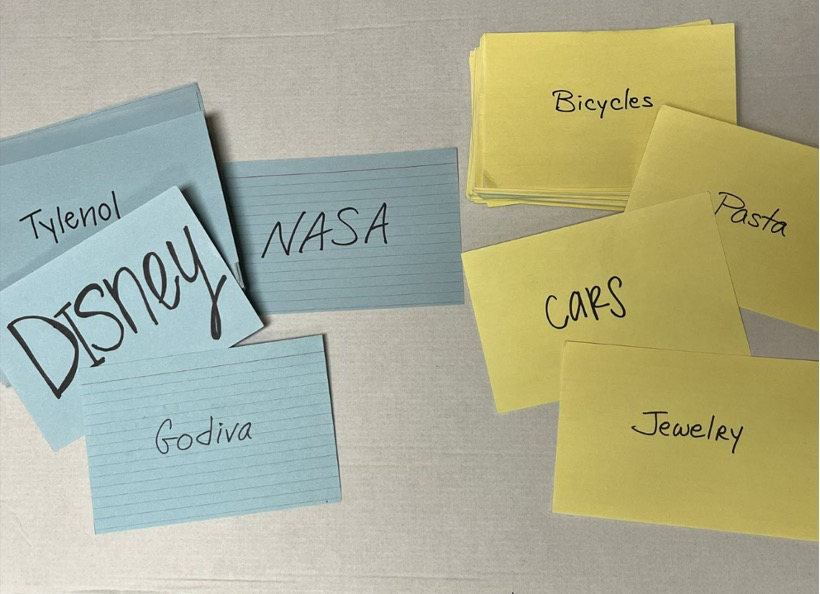
Two Buckets
Share with your students several innovations that have come from unusual combinations. For example, Netflix began as “Book of the month club” + “DVD rentals,” Kiva.org is “venture capital” + “relief for developing nations,” Google Ads is “Online auctions” + “Online ad placement,” etc. Then ask students to form teams of 3-4 people. Each team should randomly draw a major brand name from one deck of blue index cards, and a product category from another yellow deck. Then, tell the students, “Congratulations, you now work for the company on your blue card, and they have asked you to develop a new product for them in the category on the yellow card.” The task is to figure out the new product’s features and benefits, who might buy it, what it should be named, and at least one ad idea. After about 10 minutes, they should stand and tell the class what they came up with. The combinations are never the same twice (e.g., Lego fast food, Colgate theme parks, Cover Girl concrete, Porsche toothpaste).
Debrief ideas: “How did you feel about this challenge at first?” “Which of the results do you think have the most potential?”
iWish
Ask students to think on their own about a problem or hassle that a particular group faces often – it is easiest to choose from their experience as students. Examples of problems include avoiding parking tickets, getting help with remembering people’s names, finding a list of today’s fun events in the region, repelling bugs, etc. Then they should make groups of 2-3 and share their ideas with each other and decide on one that they believe can be solved by an app. In effect they are saying, “I wish I had an app that could ____.” Then, distribute large whiteboards that are made to look like iPhones and ask them to use dry erase markers to draw the app interface on them. Large sheets of paper with an iPhone outline can also work fine if they use thick markers. After a few minutes, each team should present their idea.
Debrief idea: “Do you think that identifying a problem first helped you develop a better app idea?”
Innovation U
This take-home assignment involves each student creating a display that contains their unique qualities and interests. In whatever format they choose, they are asked to display their favorite quote, an inspirational person, what they know the most about (outside of family and school), when they have experienced “flow,” their Jung typology, which of Gardner’s multiple intelligences they have, and a 3-D item of some sort. The results are always creative, inspiring, and encourage students to appreciate others’ differences as strengths.
Debrief idea: “What did you learn about your classmates and yourself through this exercise?”
100 Uses
This is a well-known exercise, and I use it to illustrate the benefits of not editing ourselves or others during brainstorming. Ask teams of 3-4 students to work together to come up with 100 uses for a basic material (e.g., newspapers, plastic bottles) in 10 minutes. This is challenging, but I find that it helps lower inhibitions for sharing ideas. After the activity, ask them to remember the feeling they get during the exercise of welcoming and celebrating any and all input.
Debrief ideas: “Was this stressful for you?” “How did you come up with so many uses?”
The R&D
The standard design thinking process starts with empathy and ends with testing and retesting prototypes. This exercise asks students to work that process in reverse. Starting with a list of new technologies and inventions in materials science, nanobatteries, AI, etc (drawn from a site like R&Dmag.com), ask students “what other needs might we meet using this technology?” One example is spider silk (5x stronger than steel) finding application in improved ropes, fabrics, or camping equipment.
Debrief idea: “Does this technique seem to help you better develop new product ideas on your own or in a team?”
Innovation Challenges
These events can take many forms, but the simple challenge is simply to “Add Value” using basic materials such as unused pizza boxes, old computer diskettes, old CDs, post-it notes, etc. The resulting student creations can be surprisingly impressive! If there are prizes, we often bring in outside judges from the community to help determine winners.
Debrief idea: “In what ways are you more comfortable innovating and creating with your hands?”
Build-Up
Write several “How might we…?” questions at the top of large index cards. Students form a circle of 7-10 people, and each student receives one of these cards. In the line beneath the question, each student writes an idea to address it, and passes to the right. The next student reads the next card and must build on, improve, or expand on the previous idea given, and they add this to the next line. As the cards progress about halfway around the group, encourage wild and out of the box ideas for the remaining entries to the cards. A variation of this is the “The Worst Idea Ever,” where each student in a smaller circle receives a card with a description of a truly terrible product idea (taxis filled with bees, shoes made from ice, fish flavored toothpaste, haircuts given by monkeys, etc) and their task is to make each idea worse somehow. Then, after the cards have made their way around, the students group up and their task is to uncover and identify nuggets of what could be a good idea somewhere among the awful.
Debrief idea: “How is this similar to any improv sessions or performances you’ve experienced?”
Visioning
Use this website to create a fictional but authentic-looking news story about an amazing thing your school did or an innovation award students at your school received http://www.fodey.com/generators/newspaper/snippet.asp. Tell students that you came across this news story, but sadly, it’s incomplete – and ask “What might we have done to earn this recognition?” Ideas for new noteworthy activities usually arise!
Debrief idea: “How does working ‘backward’ like this seem helpful?”
Elderlympics
This is an experience to build empathy for the elderly. Give students foggy glasses to put on, super bulky gloves, and old jackets to wear. Then, give them basic tasks such as finding the right medication from an assortment, measuring out liquids, buttoning their jacket, opening battery packages, peeling a banana, throwing a frisbee to a mannequin, opening a pickle jar, etc. As a debrief, the students are asked to identify what was the most challenging tasks and ideate for products or modifications of current products that would help the elderly every day.
Debrief idea: “How did it feel to be elderly for a few minutes?”
Wall of Shame
We can learn from bad examples too. In my office, I keep an assortment of inexpensive products that have failed or I believe will fail, and I bring them to class regularly to illustrate a point from the course material. Examples include: bottles of Coke Blak, several Amazon Dash buttons, Honest T, 7-Up’s DNL soda, etc.
Debrief idea: “We regularly learn from good examples of new products. What can we learn from bad examples?”
Back to empathy again
Since that opening surprise dose of empathy while listening to my guest speaker, I’ve formed a habit. A few days before each semester begins, I go to my assigned classrooms, sit in the back, and visualize how my upcoming class sessions should go so that the students keep all their hair.
The original article can be found in the Reimagining Teaching and Learning section of the 2022-2023 Change Forward Journal— Visions and Voices of Higher Education’s Future.


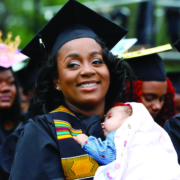

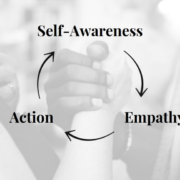 Image credit: Malte Krohn
Image credit: Malte Krohn 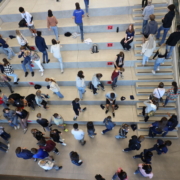 Photo credit: Doug Halvorsen
Photo credit: Doug Halvorsen 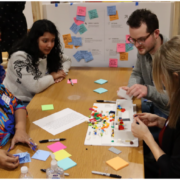 Photo Credit: Ilya Adeev
Photo Credit: Ilya Adeev 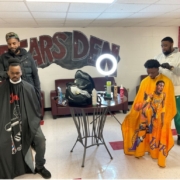


 Photo credit: Doug Halvorsen
Photo credit: Doug Halvorsen
Leave a Reply
Want to join the discussion?Feel free to contribute!